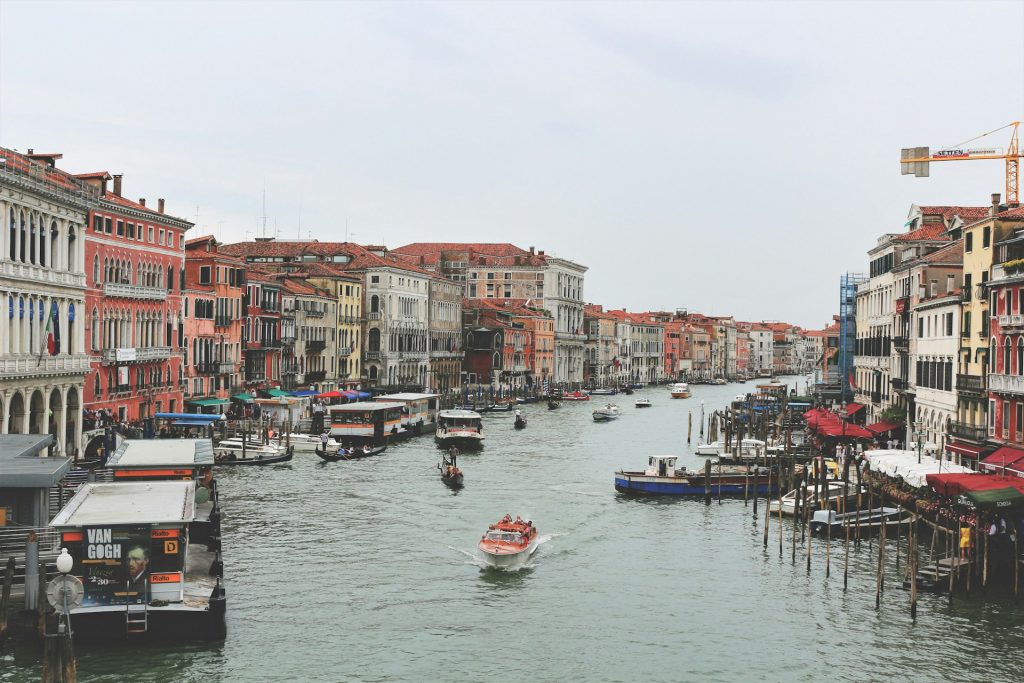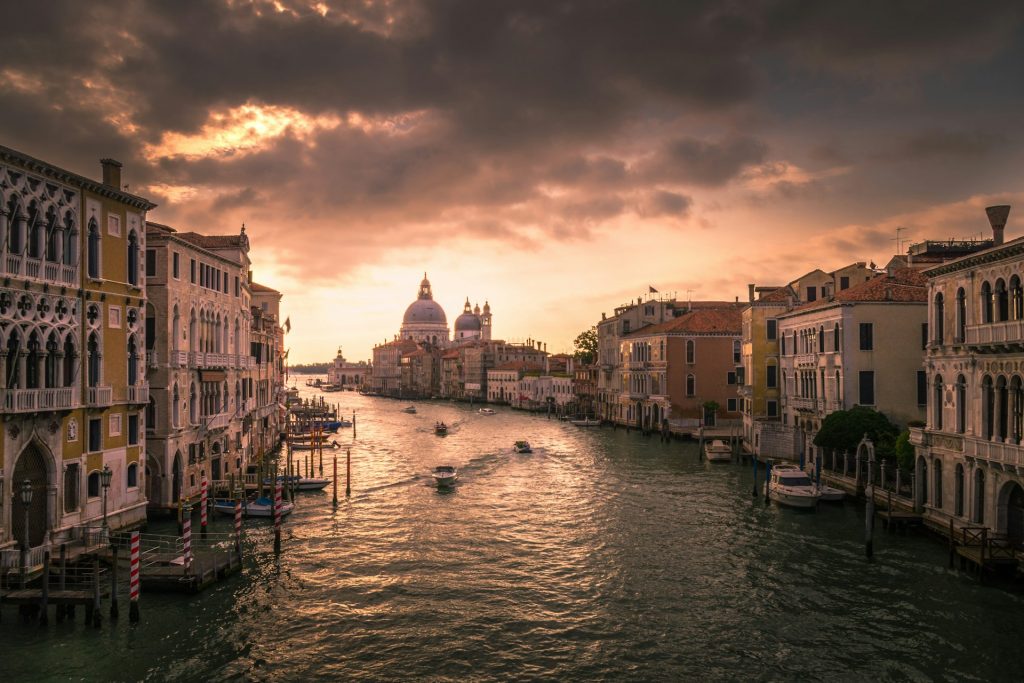The Venice Biennale stands as one of the most prestigious and influential cultural events in the world, attracting artists, critics, and enthusiasts from across the globe. Since its inception in 1895, the Biennale has showcased groundbreaking art and catalyzed global artistic trends. This article delves into the history, structure, significance, and future of the Venice Biennale, offering a thorough understanding of its impact on the art world.
1. The Origins of the Venice Biennale
A Historic Beginning
The Venice Biennale was founded in 1895 by the Venice City Council to celebrate the 25th wedding anniversary of King Umberto I and Queen Margherita of Savoy. Its initial aim was to promote contemporary art and to establish Venice as a center of artistic innovation and cultural exchange. The first exhibition, held in the gardens of the Giardini, featured artists from 16 countries and attracted over 200,000 visitors, marking a significant success and setting a precedent for future editions.
Early Developments of the Venice Biennale
In its early years, the Biennale focused on providing a platform for emerging European artists, gradually expanding to include works from artists worldwide. The introduction of national pavilions in 1907 allowed countries to showcase their cultural and artistic heritage, fostering international dialogue and competition. This format became a defining characteristic of the Biennale, with each pavilion curating its own exhibitions and themes.
Post-War Renaissance
After a hiatus during the World Wars, the Venice Biennale underwent significant transformations. The post-war period saw a shift towards more avant-garde and experimental art forms, reflecting the dynamic changes in the global art scene. The 1948 edition, often considered a renaissance for the Biennale, featured works by major artists like Pablo Picasso and Jackson Pollock, positioning the exhibition as a crucial site for contemporary art.
2. The Structure of the Venice Biennale
Main Exhibition Areas of the Venice Biennale
The Venice Biennale is primarily held in two main locations: the Giardini and the Arsenale. The Giardini, home to the historic national pavilions, offers a scenic backdrop for the exhibitions, while the Arsenale, a former shipyard, provides a vast, industrial space for large-scale installations and performances. These venues together create a unique juxtaposition of tradition and modernity.
National Pavilions
One of the most distinctive features of the Venice Biennale is the national pavilion system. Each participating country curates its pavilion independently, often showcasing works that reflect its unique cultural and artistic landscape. This system fosters a rich diversity of artistic expressions and offers visitors a global tour of contemporary art. Countries compete for the prestigious Golden Lion award, given to the best national participation.
Collateral Events and Special Projects
In addition to the main exhibitions, the Venice Biennale includes numerous collateral events and special projects scattered throughout the city. These events, organized by international institutions, galleries, and artists, provide additional layers of engagement and exploration for visitors. They often address current global issues and experimental art practices, further enriching the Biennale experience.
3. The Artistic Significance of the Venice Biennale
A Platform for Innovation
The Venice Biennale has long been recognized as a crucial platform for artistic innovation. It provides artists with an opportunity to present new and often provocative works to a global audience. Many artists have gained international recognition through their participation in the Biennale, and the exhibition has been a launching pad for new artistic movements and trends.
Influencing Global Art Trends
The Biennale’s influence extends beyond the exhibition itself, shaping global art trends and discourses. The themes and issues explored in each edition often reflect broader cultural, political, and social contexts, making the Biennale a barometer of the contemporary art world. Curators and institutions worldwide look to the Biennale for inspiration and guidance, reinforcing its role as a leading authority in the arts.
Celebrating Diversity
One of the Venice Biennale’s key strengths is its celebration of cultural diversity. By featuring artists from a wide range of backgrounds and disciplines, the Biennale promotes cross-cultural understanding and dialogue. This inclusivity has become increasingly important in the globalized world, where art serves as a bridge between different cultures and perspectives.
4. The Impact on the Host City: Venice

Source: https://unsplash.com/photos/motor-boat-sailing-on-river-near-house-JkkttDP6imE
Cultural Enrichment
The Biennale significantly enriches the cultural life of Venice, transforming the city into a vibrant hub of artistic activity. During the Biennale, Venice becomes a meeting point for artists, critics, and visitors, creating a dynamic cultural exchange. This influx of creative energy contributes to the city’s reputation as a major cultural destination.
Economic Benefits of the Venice Biennale
The economic impact of the Biennale on Venice is substantial. The influx of visitors generates significant revenue for local businesses, including hotels, restaurants, and shops. The Biennale also creates job opportunities for residents, from exhibition setup and management to hospitality services. This economic boost helps sustain the city’s cultural and economic vitality.
Preserving Heritage
While the Biennale brings contemporary art to Venice, it also helps preserve the city’s rich cultural heritage. Many exhibitions and events are held in historic buildings and sites, drawing attention to Venice’s architectural and artistic treasures. This integration of old and new highlights the city’s unique charm and ensures that its heritage is celebrated and maintained.
5. Challenges and Controversies
Balancing Tradition and Innovation
One of the ongoing challenges for the Venice Biennale is balancing tradition and innovation. While the event is rooted in a long history, it must continually evolve to remain relevant in the contemporary art world. This tension can sometimes lead to debates over the selection of artists, themes, and curatorial approaches, reflecting broader discussions about the role of art in society.
Environmental Concerns
The environmental impact of the Biennale has become a growing concern in recent years. The large-scale installations and the influx of visitors can put a strain on Venice’s fragile environment. Organizers have started implementing more sustainable practices, such as using eco-friendly materials and promoting carbon-neutral events, to address these issues. However, finding a balance between cultural celebration and environmental responsibility remains a challenge.
Inclusivity and Representation
While the Biennale has made strides in promoting diversity, questions of inclusivity and representation persist. Ensuring that the event reflects a truly global perspective involves addressing issues of accessibility and representation for artists from underrepresented regions and communities. Ongoing efforts to diversify the selection committees and curatorial teams are essential to maintaining the Biennale’s commitment to inclusivity.
6. The Future of the Venice Biennale
Embracing Digital Innovations
The future of the Venice Biennale will likely see an increased integration of digital technologies. Virtual reality, augmented reality, and digital installations are becoming more prominent in the art world, and the Biennale is poised to embrace these innovations. Digital platforms can also expand the reach of the Biennale, allowing remote audiences to engage with the exhibitions and events.
Expanding Global Participation
As the world becomes more interconnected, the Venice Biennale is expected to further expand its global participation. This includes not only showcasing artists from more diverse backgrounds but also engaging with global audiences in new and innovative ways. Collaborative projects and partnerships with international institutions will play a crucial role in this expansion.
Continuing to Lead in Artistic Excellence
Despite the challenges and changes, the Venice Biennale will continue to lead in artistic excellence. Its ability to adapt to new trends and issues while maintaining its core mission of promoting contemporary art ensures its enduring relevance. The Biennale will remain a beacon of artistic innovation, cultural exchange, and global dialogue for years to come.
7. Planning Your Visit to the Venice Biennale

Source: https://unsplash.com/photos/water-near-buildings-9qvZSH_NOQs
When to Visit
The Venice Biennale typically runs from May to November, offering ample opportunities for visitors to experience the event. The opening weeks are often the most crowded, attracting art professionals and media from around the world. For a more relaxed experience, consider visiting later in the season when the crowds have thinned, and the weather is still pleasant.
Navigating the Venues of the Venice Biennale
Navigating the Biennale’s vast array of exhibitions can be daunting, but with a bit of planning, it can be a rewarding experience. Start with the main venues at the Giardini and the Arsenale, and then explore the various national pavilions and collateral events throughout the city. Many visitors find it helpful to dedicate several days to fully appreciate the breadth and depth of the exhibitions.
Practical Tips
When planning your visit, consider purchasing tickets in advance to avoid long queues. Comfortable footwear is essential, as you will be walking extensively. Venice’s unique geography means you’ll be navigating bridges and narrow streets, so a good map or a reliable navigation app is crucial. Lastly, take the time to explore Venice itself – the city’s rich history and stunning architecture provide a perfect backdrop to the contemporary art on display.
In conclusion, the Venice Biennale is more than just an art exhibition; it is a cultural phenomenon that shapes and reflects the global art landscape. Its rich history, diverse artistic offerings, and impact on the host city make it a must-visit event for anyone passionate about contemporary art. Whether you’re a seasoned art enthusiast or a curious newcomer, the Venice Biennale offers an unparalleled experience of creativity, innovation, and cultural exchange.




